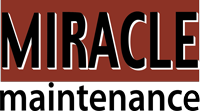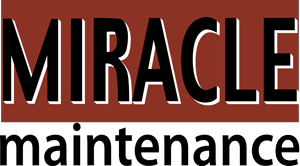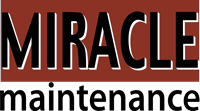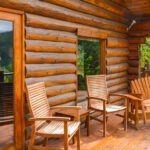Frequently Asked Questions
What areas of the cabin are inspected?
The areas of the cabin that are inspected include the exterior wood surfaces, roofing, windows, doors, and foundation. Each component is evaluated for signs of wear, damage, or mold to ensure the cabin's overall integrity and longevity.
How long does a typical cabin inspection take?
A typical cabin inspection takes approximately 1 to 3 hours, depending on the size and condition of the cabin. Miracle Maintenance ensures a thorough evaluation to identify any maintenance needs effectively.
How often should cabin inspections be performed?
Cabin inspections should be performed at least once a year, ideally in the spring, to assess the condition of the wood and stains, ensuring timely maintenance and preventing potential damage.
What are common defects found in log cabins?
Common defects found in log cabins include wood rot, insect infestations, failing stains, and structural issues due to moisture. Regular inspections can help identify these problems early, ensuring the longevity and integrity of your cabin.
Are log cabin inspections necessary?
Log cabin inspections are necessary to ensure the longevity and safety of your cabin. Regular inspections help identify issues like wood deterioration and failing stains, allowing for timely maintenance and preservation.
What is the cost of a log cabin inspection?
The cost of a log cabin inspection is typically free when you choose Miracle Maintenance. We believe in providing our clients with valuable insights into their cabin's condition without any upfront charges.
What are the benefits of a log cabin inspection?
The benefits of a log cabin inspection include identifying potential issues early, ensuring the integrity of the wood, and prolonging the lifespan of your cabin. Regular inspections help maintain its aesthetics and prevent costly repairs down the line.
What items are checked during a cabin inspection?
During a cabin inspection, the key items checked include the condition of the wood, the integrity of the stains, signs of water damage, the roof and gutters, and the overall structural stability to ensure your log cabin remains in top shape.
What certifications do log cabin inspectors need?
Log cabin inspectors need specific certifications to ensure they are qualified for the job. Typically, they should have certifications in building inspection, pest control, and wood preservation, along with training in log home maintenance and restoration practices.
What is the purpose of conducting a cabin inspection?
The purpose of conducting a cabin inspection is to assess the condition of the structure, identify potential issues such as wood deterioration or failing stains, and ensure the cabin remains safe and well-maintained, especially after harsh weather conditions.
What are the benefits of regular cabin inspections?
The benefits of regular cabin inspections include early detection of maintenance issues, preservation of wood quality, and prevention of costly repairs. These inspections ensure your log cabin remains in optimal condition, enhancing its longevity and safety.
How often should a log cabin be inspected?
Log cabins should be inspected at least once a year, preferably in spring, to assess the condition of the wood and stains. Regular inspections help identify issues early and maintain the integrity of your cabin.
What is included in a log cabin inspection report?
A log cabin inspection report includes a thorough evaluation of the cabin's structural integrity, condition of wood and stains, signs of damage or decay, and recommendations for maintenance or repairs needed to preserve its longevity.
What are the consequences of failing a cabin inspection?
The consequences of failing a cabin inspection can include costly repairs, decreased property value, and potential safety hazards. Neglecting necessary maintenance may lead to more severe issues, compromising the integrity of your log cabin over time.
What specific areas require log cabin inspection?
The specific areas that require log cabin inspection include the exterior wood surfaces, roof, foundation, and any signs of moisture damage or pest infestations. Regular checks in these areas help maintain the cabin's integrity and longevity.
How frequently should log cabins be inspected?
Log cabins should be inspected at least once a year, ideally in the spring, to assess the condition of the wood and stains, ensuring timely maintenance and protection against deterioration.
What typical issues arise during cabin inspections?
Typical issues that arise during cabin inspections include signs of wood rot, failing stains, pest infestations, and structural damage. Identifying these problems early helps prevent costly repairs and ensures the longevity of your log cabin.
What factors influence log cabin inspection costs?
The factors that influence log cabin inspection costs include the cabin's size, location, condition, and the complexity of the inspection required. Additionally, any specific maintenance needs identified during the inspection may also affect the overall cost.
What qualifications should log cabin inspectors possess?
Log cabin inspectors should possess a thorough understanding of wood properties, experience in identifying signs of wear and damage, and certifications in building inspection or maintenance. Knowledge of local weather impacts on cabins is also essential for effective assessments.
What key elements are in an inspection report?
The key elements in an inspection report include a detailed assessment of the cabin's structural integrity, the condition of wood and stains, photographs of findings, and recommendations for maintenance or repairs.










No Comments
Sorry, the comment form is closed at this time.